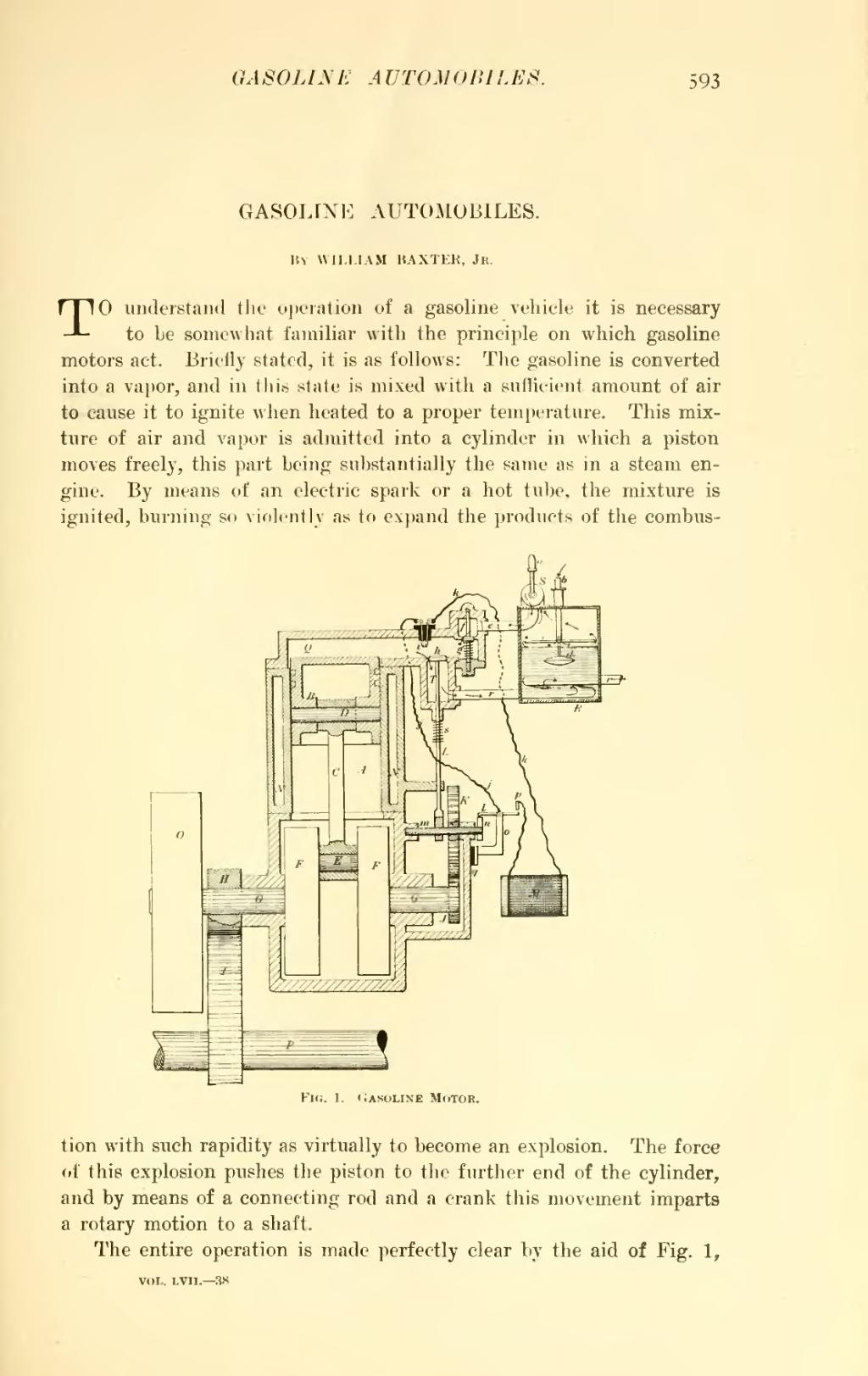| GASOLINE AUTOMOBILES. |
By WILLIAM BAXTER, Jr.
TO understand the operation of a gasoline vehicle it is necessary to be somewhat familiar with the principle on which gasoline motors act. Briefly stated, it is as follows: The gasoline is converted into a vapor, and in this state is mixed with a sufficient amount of air to cause it to ignite when heated to a proper temperature. This mixture of air and vapor is admitted into a cylinder in which a piston moves freely, this part being substantially the same as in a steam engine. By means of an electric spark or a hot tube, the mixture is ignited, burning so violently as to expand the products of the combustion

1. Gasoline Motor.
with such rapidity as virtually to become an explosion. The force of this explosion pushes the piston to the further end of the cylinder, and by means of a connecting rod and a crank this movement imparts a rotary motion to a shaft.
The entire operation is made perfectly clear by the aid of Fig. 1,

